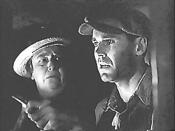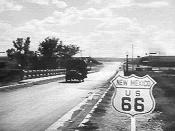Throughout history, more than one great event has happened that captured the attention of onlookers, not only the onlookers of that time, but also onlookers that were yet to come. Textbooks captured these events, and they were preserved in the hearts of the people. However, some less recognized events that occurred throughout the times that were not brought to the attention of most. These depended on the exploits of the pioneers in writing to preserve these occurrences, so that the people of the future would remember.
The Grapes of Wrath is such a book, in which a less known historic event that had a great impact on some people and was an important part of history was documented and preserved for the future to see. In The Grapes of Wrath, John Steinbeck speaks of the ongoing tirade hovering over the never-ending cycle of unemployment, and the quest for stability, independence, and happiness.
This book opens at the scene of the aftermath of a typical dust storm. It is apparent that these conditions are not by any means rare or unique, but rather common everyday scenes. The sand has settled, the male villagers are reviewing the damage, and their women and children sit quietly waiting for the men. The chapter is passive, and speaks of and to no one in particular, but rather to all people as a general whole. In the next chapter, the book begins a narrative of the Tom Joad, an ex-convict searching for his family after a four-year sentence. This narrative also takes place in Oklahoma.
This alternating pattern between passive historical chapters that involve no direct action, and those of historical-fiction chapters, continues to alternate throughout the book, with the historical chapters extending in length from one to three chapters at a time, and...



John Steinbeck
You have written a good essay on John Steinbeck's classic novel. The effect of a depression can be devastating, especially in human terms, and hopefully another such economic catastrophe can be averted. Great work! Of course, it's only necessary to submit your essay once.
6 out of 6 people found this comment useful.